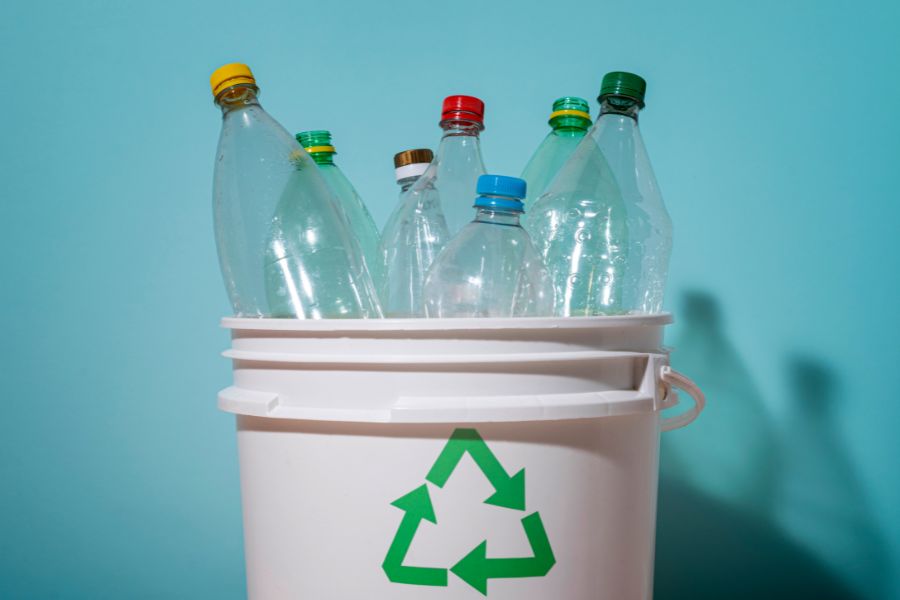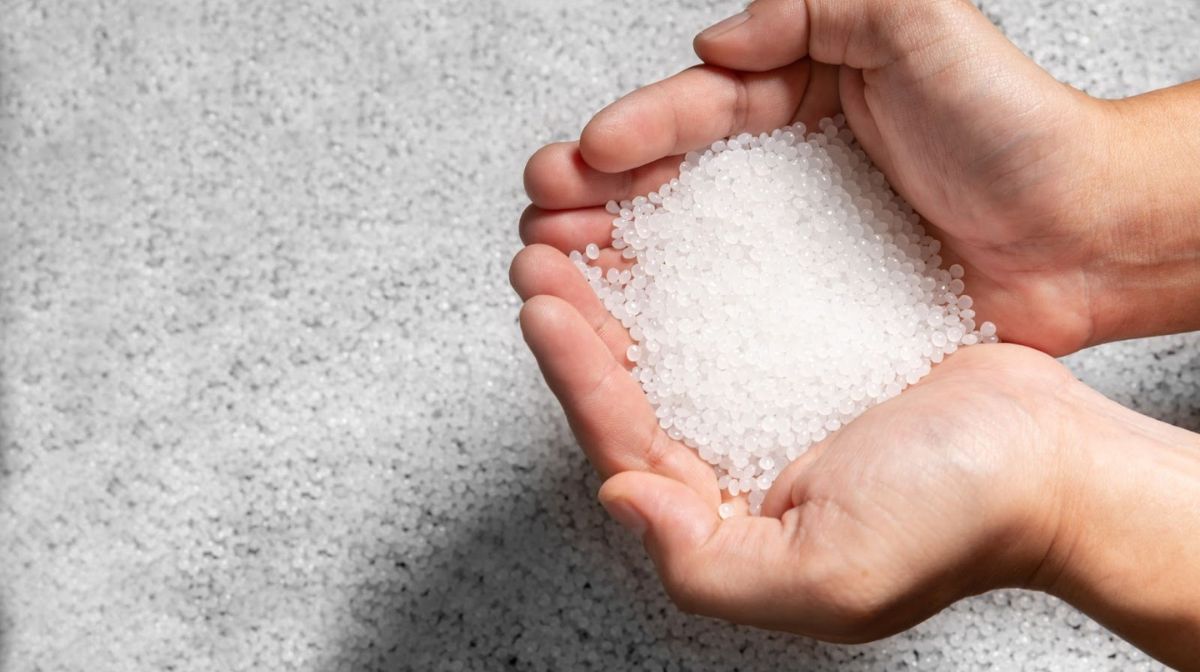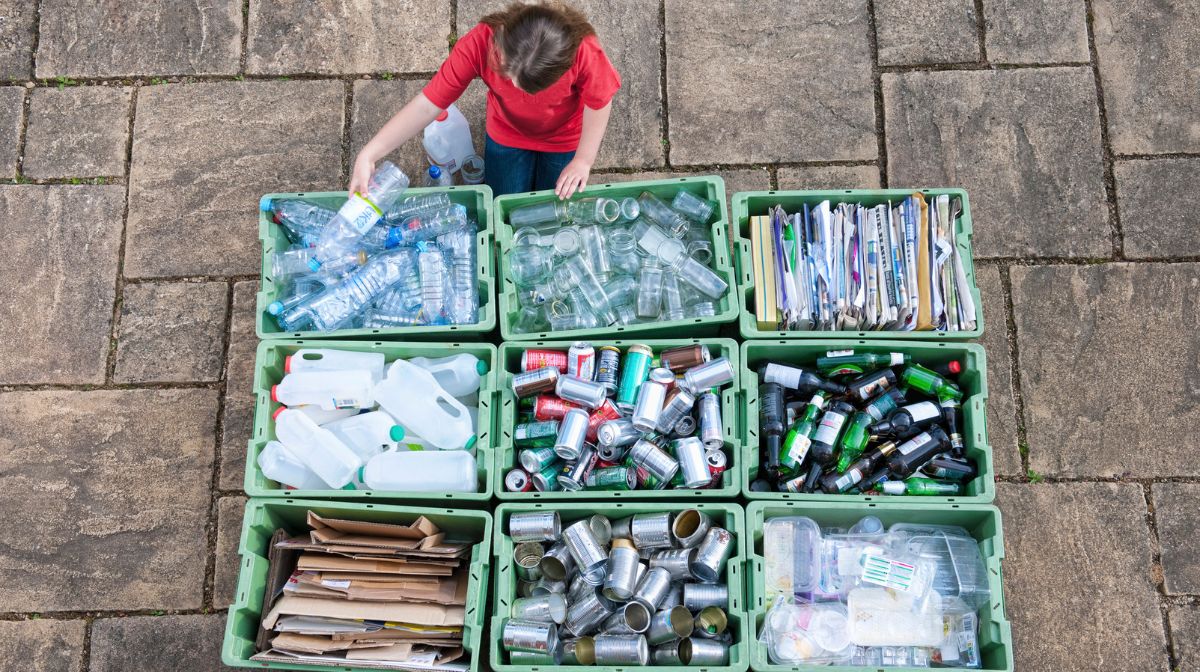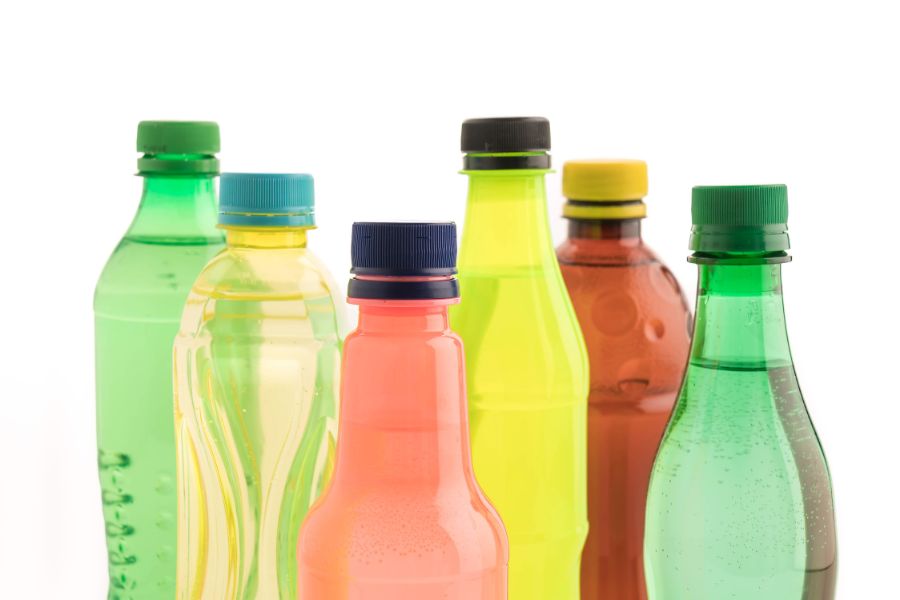KNOWLEDGE
How Recycled Plastic Packaging Aligns With Sustainability Goals
Is recycled plastic eco-friendly? This question is often asked by companies who want to keep using plastic packaging while also reducing their energy consumption. The truth is that recyclable plastic packaging can improve your environmental sustainability and drive your long-term business value. However, before making a long-term change, learn about the different types of plastics that align with your larger sustainability goals.

In this article, we’ll look at how sustainable packaging can help your business contribute to building a circular economy, all while supporting better practices, operational efficiency, and environmentally friendly alternatives to virgin plastics.
Is plastic packaging recyclable?
Not all plastics are created equal, and not all plastics have the ability to be recycled. Whether plastic packaging is recyclable depends on the type of material, the design of the packaging, and the recycling infrastructure availability of a given area. Figuring out plastic recycling can be confusing for the everyday consumer due to mixed messaging and varying regional recycling capabilities.
The chasing arrows triangle and plastic resin codes (recycle numbers) on a container are often seens as a ubiquitous recycling symbol that a packaging can be tossed into the recycling bin. The reality is that there’s more to the story, and businesses may need to make more of an effort to communicate to their customers how to properly recycle their packaging since the type of materials used to create the packaging will determine its recyclability.

Types of recyclable plastic materials
Common post-consumer recycled (PCR) plastic packaging include:
- PET (polyethylene terephthalate): Lightweight and durable, PET plastic is a versatile material that can be recycled multiple times. Brands can adjust PET’s properties for heat resistance, impact resistance, and aesthetics, from medical devices to soda and water bottles, PET is a highly recyclable material choice and considered an environmentally friendly plastic.
- HDPE (high-density polyethylene): HDPE can be recycled up to 10 times, and it’s used to package everything from pharmaceutical goods to personal care products to milk. While the plastic itself is lightweight, its molecular makeup is stable and dense. As a chemically-resistant plastic, it’s a good choice for packaging potentially hazardous products.
- LDPE (low-density polyethylene): LDPE can be manipulated for anything from tear resistance to transparency. Available in both rigid and flexible forms, this versatile material can be made into a range of plastic products from film to squeezable bottles. Rigid LDPE is easier to recycle than the flexible, soft versions such as cling wrap.
- PP (polypropylene): PP is usually used for caps and closures, and the plastic can be optimized for moisture absorption and flexing strength, depending on the product. While it’s not a particularly easy plastic to recycle, new technology in the sector is making it easier to add PP recycling to the mix.
Environmental benefits of recyclable plastic packaging
With around 430 million tons of plastic produced annually, biodegradable plastics and recyclable plastic packaging are needed more than ever. Conventional plastics that miss the recycling process and end up in landfills are causing detrimental harm to our planet and human health. During the manufacturing process, the fewer raw materials companies use, the fewer greenhouse gas emissions they produce, and the more energy they can save. Reducing the ecological footprint should be top of mind for companies globally because the scale of the problem with plastic waste is growing every year.
If you have broader sustainability goals, such as reducing your transportation footprint, boosting your recycling quotas, lowering your GHG emissions, and creating less waste, utilizing recyclable materials and renewable resources across your packaging supply chain is a step in the right direction. For example, choosing a lighter plastic will reduce your transportation loads, which can help save fossil fuels. While some of these changes may seem incremental, you might be shocked at how it all adds up.
Reducing plastic waste in landfills and oceans

Plastic waste is detrimental to all organic material, including wildlife and humans. The more contamination in our landfills and oceans, the more we start to see wide-scale damage. Ocean-bound plastic is a major problem that drives plastic waste directly into our oceans and waterways, threatening marine life on a large scale.
With recyclable plastic packaging, you can reduce waste and pollution, helping you reach larger eco-friendly targets. The best part is that today’s technology makes it possible to recycle traditional plastics into new products across industries diverting them from the landfill.
Lowering carbon emissions
While it does take energy to recycle plastic, it takes up to 88% less energy than creating new plastic. If you’re looking to reduce your carbon emissions, this one switch can quickly add up over the course of your fiscal year. Just be careful which avenues you select, as both the type of plastic you choose and the methodology of recycling matter greatly to your environmental impact. Ultimately, you need customers to comply with recycling guidelines before you can complete the cycle.
Conserving natural resources

Better waste management starts with understanding where and how resources are being consumed and how to prevent waste before it occurs. When 99% of all plastic consists of fossil fuels, including oil and gas, recyclable plastic can help your company make the most of these finite resources. Not only does new plastic eat into an ever-decreasing supply of fuels, but the manufacturing of new plastics and disposing of old ones contributes to global warming and the accelerated depletion of our natural resources.
Types of recyclable plastic containers
With an array of plastic containers available to businesses, you’re making choices based on everything from price point to branding personality to compliance requirements.
There are two ways to create post-consumer recycled resin. From a business standpoint, deciding if mechanical recycling or chemical recycling is the best option for your product packaging is a good place to start. There are various factors involved in this decision, depending on what you want the end result of your packaging to look like.
Let’s look into the different types of recyclable containers.
Recyclable Plastic Bottles
Plastic bottles, such as the Boston Round are available in an array of plastic types. Whether you’re packaging lab supplies or beverages, here are a few things to know about them:
- PET: PET is known as resin code number 1 and is one of the most common materials in the world. It’s eco-friendly food packaging that can be recycled into fabric used for clothing, blankets, carpets, and more or turned into material for new packaging.
- HDPE: As resin code number 2, HDPE is often recycled into furniture, building materials, or bottles. Recycled HDPE is a great option if you need a strong or opaque container to protect against light or impact.
- LDPE: As resin code number 4, LDPE comes in both a rigid and a flexible form. As mentioned before, the rigid form is easier to recycle than the flexible form. Recycled LDPE is used to create garbage bags, liners, films, floor tiles, shrink wrap, pallet wrap, furniture, paneling, lumber, and flame-retardant products.
The ease of recycling standard bottles ultimately depends on where people live, particularly when LDPE may require additional steps for the consumer (like driving to a recycling center). The good news is that many towns and cities offer curbside recycling for PET and HDPE, and many big-box retailers collect flexible LDPE products (such as single-use plastic bags), making it easier for the average person to recycle these items.
Recyclable plastic jars
HDPE and PET are both easy for consumers to recycle. Because most recycling programs accept both types of packaging, consumers don’t have to worry about whether they throw the plastic in the wrong bin. In addition, it’s worth noting that technology has made the recycling of nearly all plastics more accessible as a way to overcome sustainable packaging challenges, so it may be worth researching different programs to see how their climate change initiatives mesh with yours.
Recyclable plastic tubes
Recyclable plastic tubes are often made from medium-density polyethylene, known as MDPE, which is resin code number 2 (the same as HDPE). Both types of polyethylene are highly resistant to toxic chemicals, including acids, and bases, though HDPE is typically more durable than MDPE. Recycled MDPE is used to make packaging, pipes, shopping bags, toys, and outdoor items, like picnic tables, storage bins, playhouses, and dog houses.
How to choose the right recyclable plastic container for your product packaging

With recyclability as the ultimate goal, it’s important to remember that using recycled material in your packaging does not mean that your finished product is recyclable.
For sustainability efforts, many companies are implementing the use of at least 25% post-consumer recycled material in their packaging, but are then creating a product packaging that is harder to recycle. For example, if you use PCR to create a packaging that is dyed black, or another dark color, the new package becomes difficult to recycle due to recycling stream limitations with identifying dark colored containers. New technologies and innovations, such as NIR-sorting, are working to reduce this type of waste, but they are not widely available. These are issues that are often ignored but need to be considered as we face very real problems as a result of plastic waste.
Choosing the right recyclable plastic container can be tricky, particularly if you’re trying to balance sustainability with price and safety. Below, we’ll look at what to consider before making the switch.
Assessing material compatibility for product integrity
Your product’s integrity and customer safety should be at the core of the equation. After all, one contaminated unit can spoil an entire lot of product and cause massive backlash if your product needs to be recalled and consumers are harmed.
Whether you’re selling food or sunscreen, your customers should trust that you haven’t compromised their well-being for your bottom line.
Evaluating recyclability and environmental impact
This is likely the most difficult question when choosing a plastic: how much effort do you want your customers to expend to recycle your product? It’s also helpful to understand the differences between recyclability and sustainability in packaging. If the consumer is asked for too much, like driving to the recycling center across town, they may come to associate your product with another chore they have to do. Ideally, you’ll be able to pick the easiest recycling method for the largest group of people, so you can have the environmental impact you’re looking for without alienating customers.
Matching container design to product functionality and brand appeal
From color to shape to feel, your customers have come to expect certain things from your product. Making a change, even for the sake of the environment, can negatively influence your customers’ perception or product performance. For example, if you start using a different plastic that feels thinner than your previous versions, the customer may assume that the brand has compromised on quality — even if that isn’t the case.
It’s important to weigh how the change will impact perception before you make a major transition in your packaging, and consider launching a marketing effort to inform the public of the change and the positive environmental impact associated with it.
Making the switch to sustainable plastic packaging
Recyclable plastic packaging hits several key components of moving in the direction of sustainability, including reducing waste, reusing materials, and cutting back on fossil fuel usage. However, making a large change like this can have unintended consequences and needs to be done in a thoughtfully considered way.
If you’re ready for more sustainable solutions and you have questions about the best next steps for your company, Paramount Global is here to help you move forward. Call us to speak to a specialist today!
Hayley is a marketing professional and copywriter with a background in crafting content for a diverse range of industries. She has been writing about packaging and supply chain logistics for Paramount Global since 2022. She specializes in explaining complex topics in a clear and engaging way and is an advocate for sustainability in packaging and supply chain management.
Read More
For over forty years, Paramount has been delivering perfectly integrated packaging and supply chain solutions.
